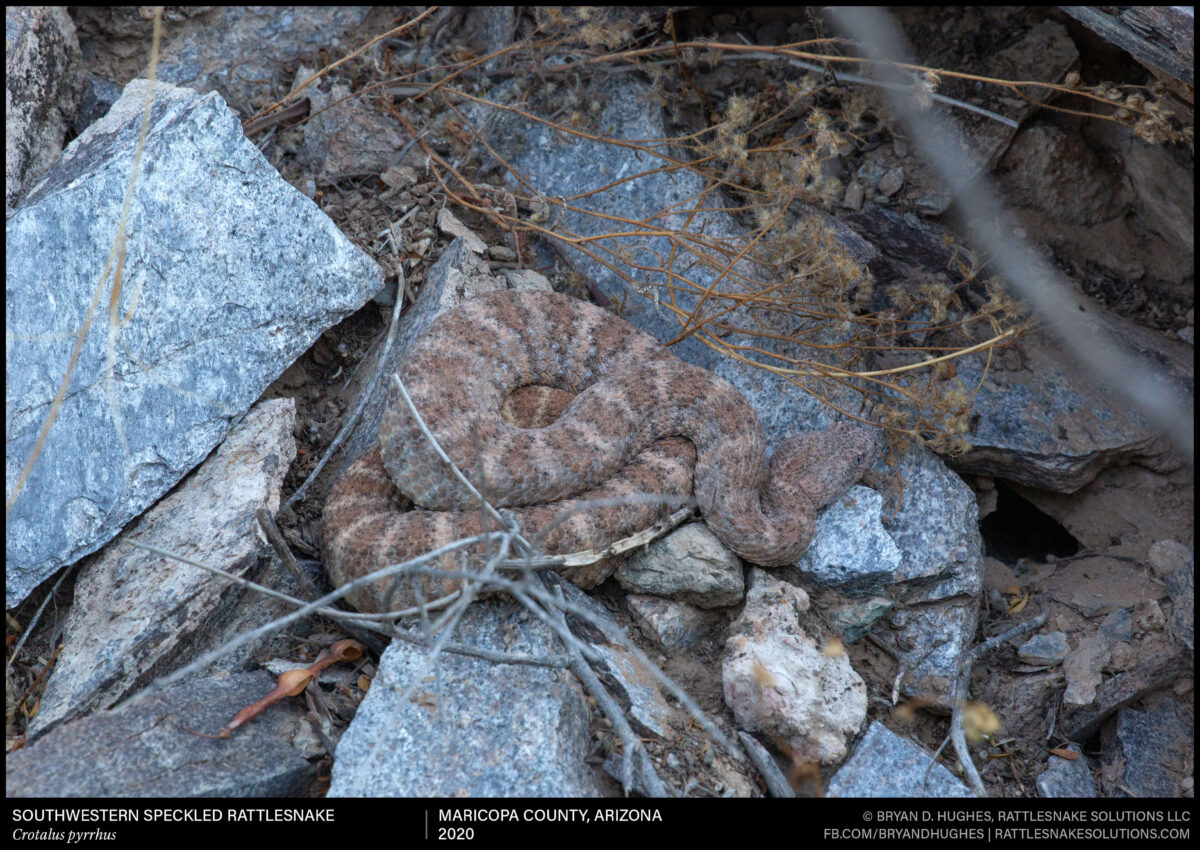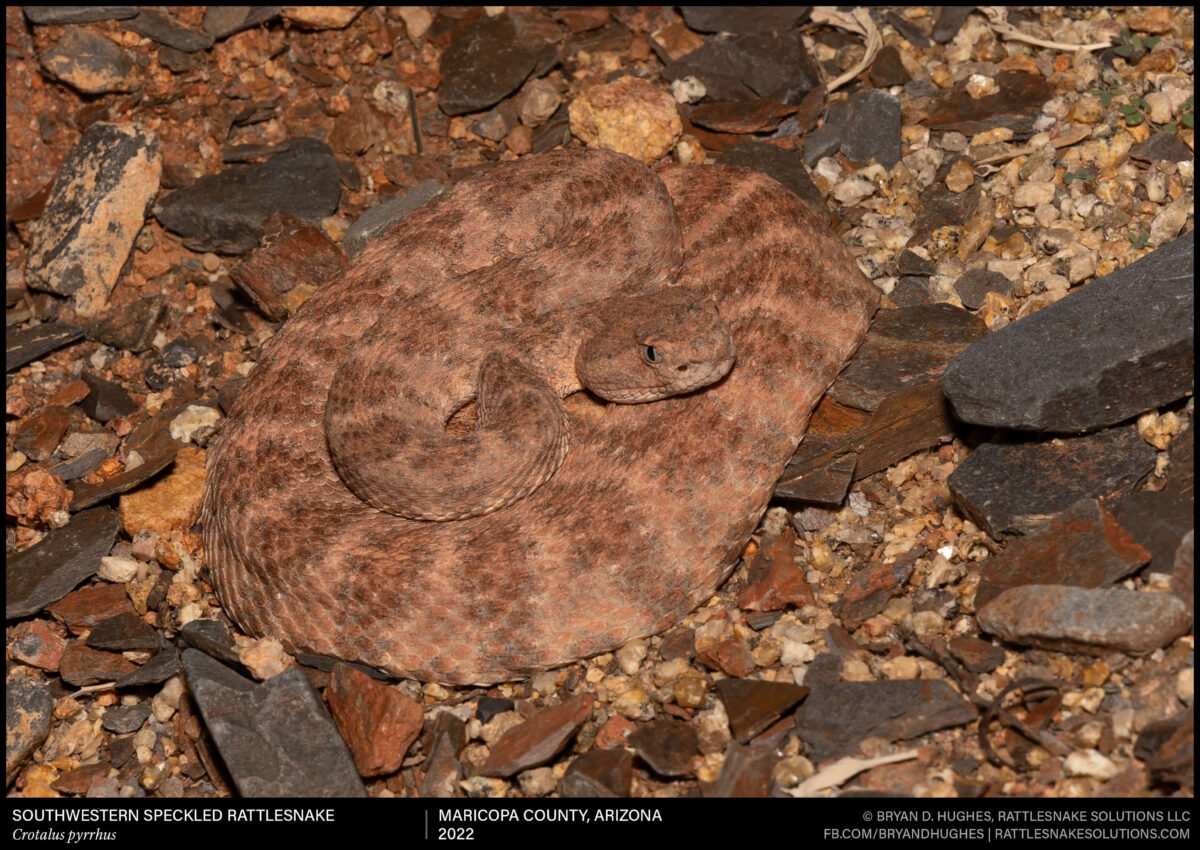Despite being incredibly easy to observe in surrounding mountain ranges, the Southwestern Speckled Rattlesnakes in the Sierra Estrella just southwest of Phoenix are harder to spot. They’re likely just as common, but the steep terrain and majority of prime geology for the species being inaccessible reservation land make it a challenge to see one. Kris Haas spotted this pretty one way up mountain.






